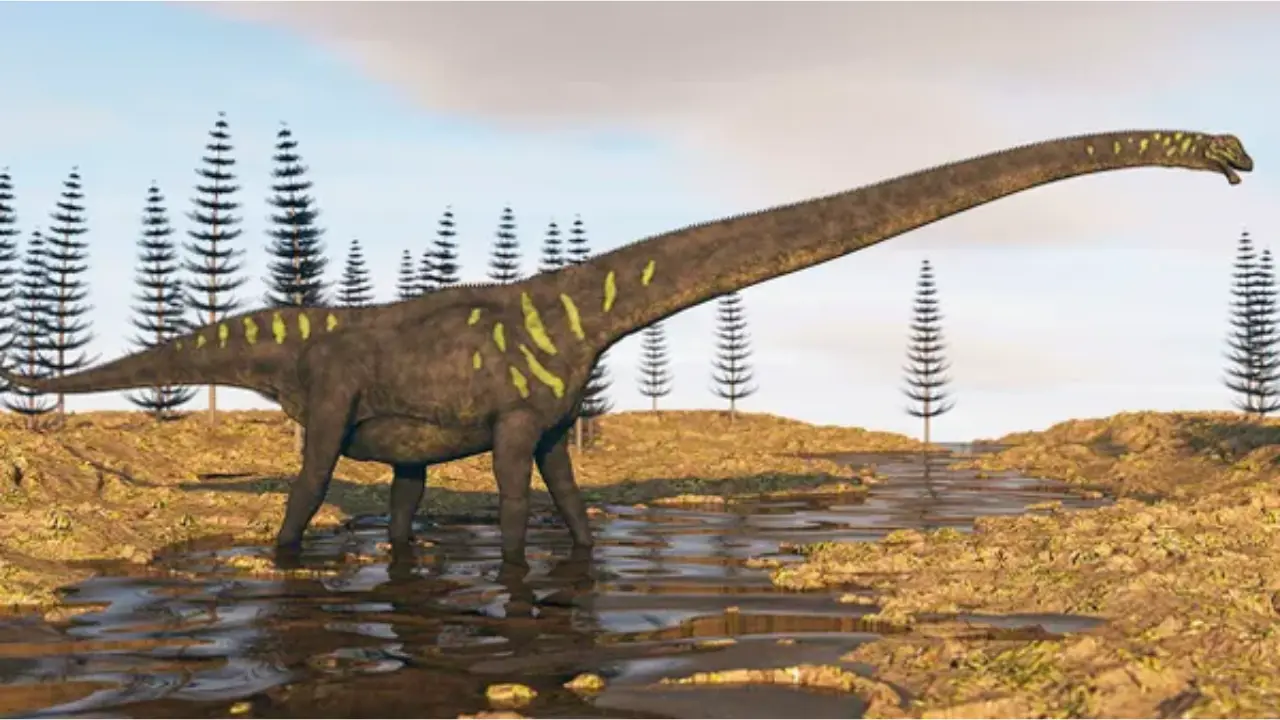Introduction
There were many fascinating creatures roaming the Earth during the Mesozoic era, which was characterized by incredible diversity. Nigersaurus is one such animal that has drawn interest from both paleontologists and dinosaur enthusiasts. Nigersaurus is a living example of the extraordinary evolution that occurred millions of years ago, thanks to its distinctive features and intriguing traits. In this article, we will delve into the captivating world of Nigersaurus, exploring its unique characteristics and the secrets it holds.
Nigersaurus’s Discovery
Imagine you are a paleontologist. You love to explore the past and learn about dinosaurs. One day, you go on an adventure to the Sahara Desert in Niger. There, you find something amazing. You find fossils of a new kind of dinosaur. You can name it Nigersaurus. This dinosaur is very strange and wonderful. It helps you understand more about the ancient world. You are very happy and curious about your discovery.
Classification and Taxonomy
Some dinosaurs have very long necks. They are called sauropods. One group of sauropods is the Brachiosauridae. Nigersaurus is one of them. It is a kind of Brachiosauridae. Its full name is Nigersaurus. Scientists gave it this name after they looked at its bones and compared them to those of other dinosaurs.
Aspects of Anatomy
Nigersaurus was different from other dinosaurs in many ways. The most obvious way was its long neck. It could use its neck to reach plants that were very high. Its head was also very small for its body. It had sharp, flat teeth that were good for eating ferns and other plants that were close to the ground.
Habits of Eating and Feeding
Nigersaurus ate only plants. Scientists know this because of its body parts. It had a long neck and special teeth that helped it eat. Moreover, it could use its neck to grab leaves and branches that were high up. It liked to eat plants that were tall. This way, it could live well in places with many tall plants.
Paleoecology and Habitat
Approximately 115 million years ago, during the middle Cretaceous period, Nigerasaurus lived in what is now modern-day Niger. The area was then known for its lush, swampy forests and tropical climate. Nigerasaurus thrived in these conditions because they offered it an abundance of plant life and the water sources it needed to survive.
Size and Physical Qualities
When compared to some of its enormous relatives, Nigerasaurus was a dinosaur of average size. Its length was roughly 30 feet (9 meters), and its hip height was about 10 feet (3 meters). Its long neck, which made up about half of its length, allowed it to reach impressive heights in the vegetation. Despite its size, Nigerasaurus was relatively lightweight, which allowed it to move quickly and efficiently through its surroundings.
Life Cycle and Reproduction
Due to the scant fossil evidence, theories about Nigerasaurus’ reproductive habits and life cycle are still largely speculative. However, it is thought that Nigerasaurus laid eggs in a manner resembling that of contemporary reptiles based on research on closely related sauropod dinosaurs. The hatchlings would have come out of the eggs as tiny versions of the adults, and they would have gradually gotten bigger.
The Extinction of Nigerasaurus
Like many other dinosaurs, Nigerasaurus became extinct towards the end of the Cretaceous period, approximately 66 million years ago. The exact cause of its extinction is still a subject of debate among scientists. The prevailing theory suggests that a catastrophic event, such as an asteroid impact or volcanic activity, led to dramatic environmental changes that resulted in the extinction of numerous species, including Nigerasaurus.
Paleontological Research Importance
The study of paleontology places a great deal of value on Nigersaurus. Its discovery has shed important light on the diversity and evolution of sauropod dinosaurs. Scientists have learned more about the adaptations that allowed these magnificent creatures to flourish in various environments by examining their skeletal structure.
Exciting Findings and Current Studies
Nigersaurus is very interesting to scientists. They want to learn more about it. They have found more bones and learned new things about the dinosaur. Furthermore, they have learned how it lived with other dinosaurs, how it sensed the world, and how it moved around. These things help us know more about the old times and the amazing animals that lived then.
The Nigersaurus Legacy
In the world of science and popular culture, Nigerasaurus has left a lasting impression. People all over the world have enthralled by it because of its distinctive anatomical features and fascinating history. Reconstructed Nigersaurus skeletons and exhibits are proudly on display in museums all over the world, allowing visitors to be in awe of the wonders of prehistoric life.
Conservation efforts and preservation of fossils
The preservation of Nigersaurus fossils, as well as those of other extinct animals, is crucial for the study of paleontology. Protecting fossil sites, stopping illegal excavations, and making sure that these priceless relics of our planet’s past are preserved for future generations are ongoing efforts. Scientists can continue to research and learn from these amazing creatures by conserving their fossils.
References to Pop Culture
Nigersaurus’ majestic nature has not gone unnoticed in popular culture. It has appeared in a variety of media, such as books, documentaries, and even motion pictures. It is a favorite among dinosaur enthusiasts of all ages because of its distinctive appearance and fascinating features.
Conclusion
With its long neck, leaf-shaped teeth, and average size, Nigersaurus stands out among the Mesozoic era’s remarkable dinosaurs. Paleontologists have worked diligently to unlock its mysteries and gain important knowledge about its biology and role in ancient ecosystems. The legacy of Nigersaurus continues to arouse interest and fascination as it serves as a constant reminder of the extraordinary diversity that once inhabited our planet.
FAQs
Q1: How did Nigerasaurus get discovered?
Dr. Paul Sereno led an expedition that discovered Nigersaurus in the Sahara Desert of Niger.
Q2: What was the size of Nigersaurus?
Nigerasaurus grew to be about 30 feet (9 meters) long and about 10 feet (3 meters) tall at the hips.
Q3: When did the Nigersaurus go extinct?
Nigersaurus went extinct at the end of the Cretaceous period, approximately 66 million years ago.
Q4: What role does Nigersaurus play in paleontological research?
Nigerasaurus provides valuable insights into the evolution and diversity of sauropod dinosaurs, contributing to our understanding of prehistoric life.
Q5: Are there any ongoing Nigersaurus studies?
Yes, ongoing research and excavations continue to reveal new details about Nigersaurus, such as its locomotion, sensory abilities, and social dynamics.






